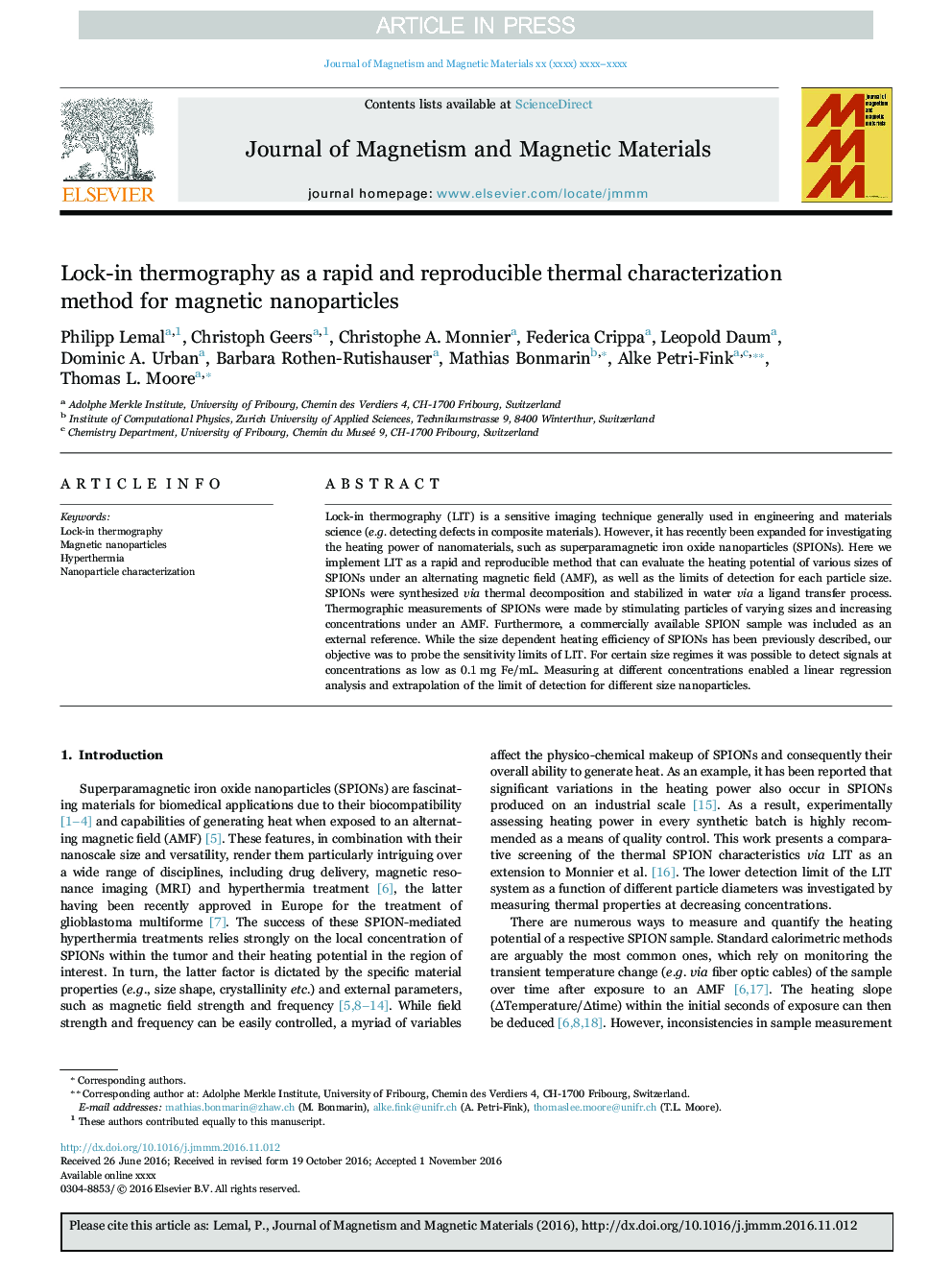| Article ID | Journal | Published Year | Pages | File Type |
|---|---|---|---|---|
| 5491181 | Journal of Magnetism and Magnetic Materials | 2017 | 6 Pages |
Abstract
Lock-in thermography (LIT) is a sensitive imaging technique generally used in engineering and materials science (e.g. detecting defects in composite materials). However, it has recently been expanded for investigating the heating power of nanomaterials, such as superparamagnetic iron oxide nanoparticles (SPIONs). Here we implement LIT as a rapid and reproducible method that can evaluate the heating potential of various sizes of SPIONs under an alternating magnetic field (AMF), as well as the limits of detection for each particle size. SPIONs were synthesized via thermal decomposition and stabilized in water via a ligand transfer process. Thermographic measurements of SPIONs were made by stimulating particles of varying sizes and increasing concentrations under an AMF. Furthermore, a commercially available SPION sample was included as an external reference. While the size dependent heating efficiency of SPIONs has been previously described, our objective was to probe the sensitivity limits of LIT. For certain size regimes it was possible to detect signals at concentrations as low as 0.1Â mg Fe/mL. Measuring at different concentrations enabled a linear regression analysis and extrapolation of the limit of detection for different size nanoparticles.
Related Topics
Physical Sciences and Engineering
Physics and Astronomy
Condensed Matter Physics
Authors
Philipp Lemal, Christoph Geers, Christophe A. Monnier, Federica Crippa, Leopold Daum, Dominic A. Urban, Barbara Rothen-Rutishauser, Mathias Bonmarin, Alke Petri-Fink, Thomas L. Moore,
